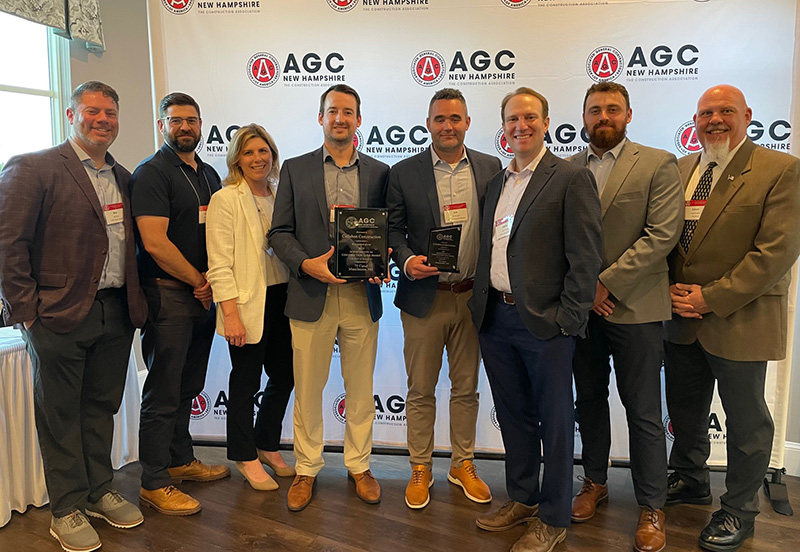News: Construction Design & Engineering
Posted: March 20, 2014
Current cost effective and efficient practice: Converting office space to medical space
Increasingly, commercial spaces and offices are being renovated to serve medical office buildings, outpatient clinics, wellness centers, and other health care facilities. It's a task that may leave developers reaching for the aspirin. But leave it to the architects and engineers to come up with the solutions to the challenges lurking amid the structure - while creating opportunities for more cost-effective operations - and more efficient care.
Early conversion concerns
Medical buildings, even seemingly basic ones, can often use significantly more power, and heating, ventilation, and cooling (HVAC) than a typical office building would require. The strength of the existing main electrical service and the distribution network should be carefully studied first for capacity.
HVAC systems may provide adequate supply, but may not have the ducted return air system required in medical spaces. Emergency or life safety systems may also need an upgrade based on the degree or frequency to which patients become non-ambulatory - or unable to move under their own power - while receiving treatment.
Margulies Perruzzi Architects (MPA) renovated an 80,000 s/f office building in Woburn, Mass. to accommodate doctors from Winchester Hospital outpatient departments and affiliated physician suites. Part of the retrofit included new mechanical systems specifically used in medical spaces. Ensuring a healthy environment for patients and staff starts with air handling systems that meet ASHRAE standards for fresh air ventilation, filtration and exhaust.
From air flow - to traffic flow
From acute care to ambulatory clinics, healthcare architects focus on process refinement within healing environments. But when you're converting from office to medical office - expect that you'll be tearing down some walls - literally and figuratively.
The typical walled-off suites of commercial buildings will often need to be opened up during medical office conversions. Some of the newest, out-of-the-ground medical office construction features open, collegial spaces, as many individual providers now seek opportunities to collaborate with other practices or specialists. Renovations to existing buildings may be able to provide similar flexibility in layout. The new Winchester Hospital Outpatient Center features a lobby concierge station to direct visitors, a central registration area and a shared outpatient lab.
Within the actual doctors' offices, employing the Lean design process was also helpful to outline complex patient flows and develop a design minimizing travel and patient wait times. MPA utilized the Lean design methodology of DMADV (Define, Measure, Analyze, Design and Verify) to understand Winchester Hospital's former processes and develop future solutions. Evidence-based design strategies were also incorporated by using existing treatment rooms as mock-up spaces to test design solutions. This process helped the clinical staff envision the finished project in lieu of viewing plans.
Structural sticking points
The presence of any form of medical imaging technology will have ramifications on the existing building structure. Some imaging equipment generates vibrations that must be isolated from other parts of the building, while other such equipment may be especially sensitive to vibration, and therefore require special isolation design.
When moving from office to medical office, expect that you may also need to cut a hole in the side of the building just to move your equipment in by crane. The basic weight of some equipment items may be much greater than a typical office building was designed to support, triggering reinforcement of the structural frame. At the Winchester Hospital Outpatient Center, MPA redesigned some floors to accommodate the weight of breast care imaging instruments.
Entryways and pathways
The entrances to office buildings often need to be replaced by automatic sliding doors to ease patient access. A multi-floor building may require a stretcher-sized elevator cab. Consideration should also be given to ambulance access to the main entrance. Full-scale renovations will likely trigger an upgrade to current accessibility codes, but even here, additional investigation is warranted. Stretcher access and the use of wheelchairs, walkers and other support mechanisms all have to be factored into the route of travel through the building. Other finishes like way finding systems and emergency lighting are smaller, but still important pathway concerns.
As architects and providers continue to navigate the intricacies of office to medical office conversion, expect both sides to take great care in discussions about best practices - with the patient always top of mind.
Bradley Cardoso, AIA, is a senior healthcare architect at Margulies Perruzzi Architects, Boston.
MORE FROM Construction Design & Engineering
Nobis Group awards Robinson and Moreira STEM scholarships
Concord, NH Nobis Group, a 100% employee-owned consulting firm specializing in engineering and environmental solutions across the Northeast, has named the recipients of its 2025 STEM Scholarship: Andie Moreira of
Columns and Thought Leadership

The design-build advantage: Integrated interior design solutions - by Parker Snyder
When it comes to corporate interior spaces for both commercial and industrial projects, partnering with a design-build firm with in-house interior design services can offer clients many benefits. Unlike traditional delivery methods where interior designers operate independently from the design and construction teams, often creating a longer project timeline as cost negotiations and revisions ensue

Careers in Construction Month focus on training and safety - by Joe Camilo
October is Careers in Construction Month, and rarely has it been more consequential. According to our chapter’s national parent organization, the construction industry needs to attract half-a-million new workers in the coming year to meet demand. Addressing that need is a huge job, but we at ABC MA are trying to do our part.

Ask the Electrician: Is summer a prime time for commercial electrical maintenance?
The answer is “Yes!” While January marks the official new year, many businesses view September as a fresh start. This makes summer an ideal time for commercial property owners to schedule long-term electrical maintenance projects.

The rise of incubators and co-working spaces: The latest in life sciences - by Matt Combs
In recent years, the life science industry has witnessed a shift in how companies operate and innovate. One of the key driving forces behind this transformation is the emergence of incubators and co-working spaces specifically tailored to meet the unique budget and schedule needs of startups.







.png)
